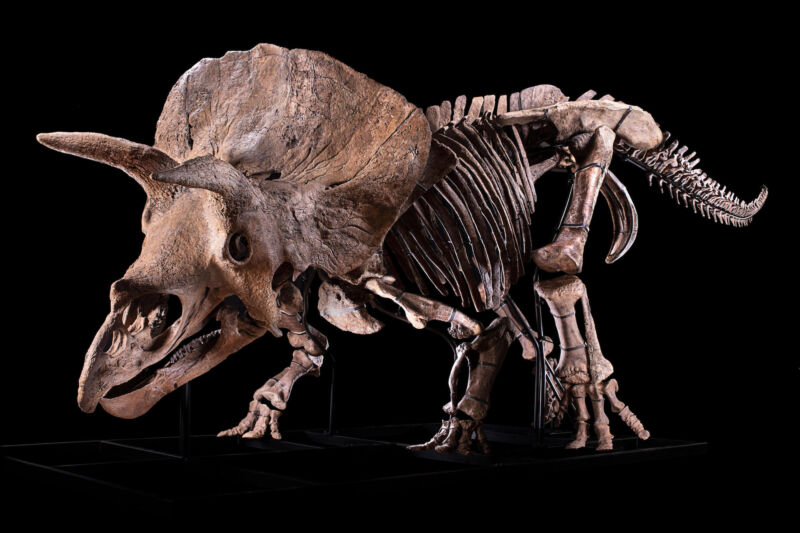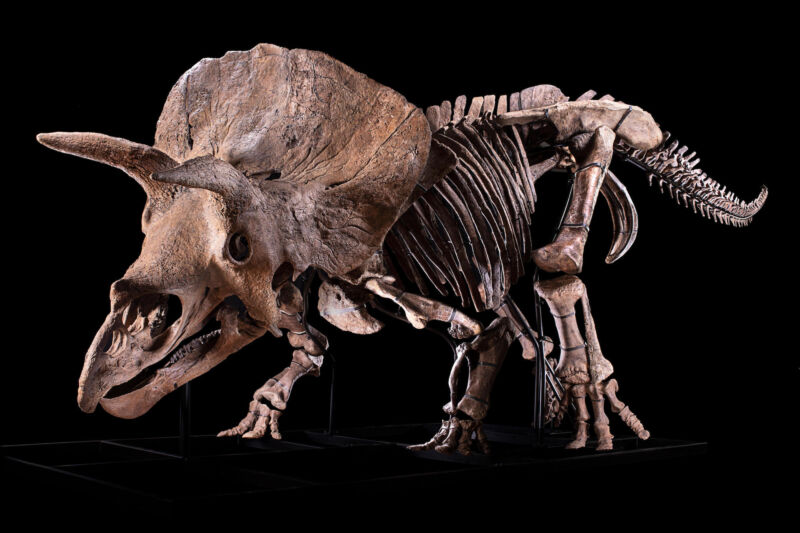
Enlarge / Meet Big John. (credit: Zoic Limited Liability Company)
It’s difficult to tell which feature of the triceratops is more striking: the two large horns that jut from its forehead or the large frill that extends out from the back of its skull. In the minds of many paleontologists, the two features appear to be related. Scars found in the bones supporting the frill also seem to suggest that the animals engaged in combat with their horns, much like modern animals such as moose—fights that regularly resulted in injuries.
But it’s difficult to rule out alternative explanations for some of the holes found in the fossil remains of frills. Some of the holes could have been a result of decay with age or damage after death. Now, an analysis of a triceratops skeleton known as “Big John” eliminates a couple of possibilities by showing that a hole punched through one of the bones of the frill seems to have started healing before the animal died.
Hole in one
The large frill at the back of a triceratops’ head is made from large, bony plates that are fused with the bones that do the things we normally associate with skulls, like protecting the brain. They were present in early species in this lineage that lacked pronounced horns and so are thought to have originally evolved for display purposes.





